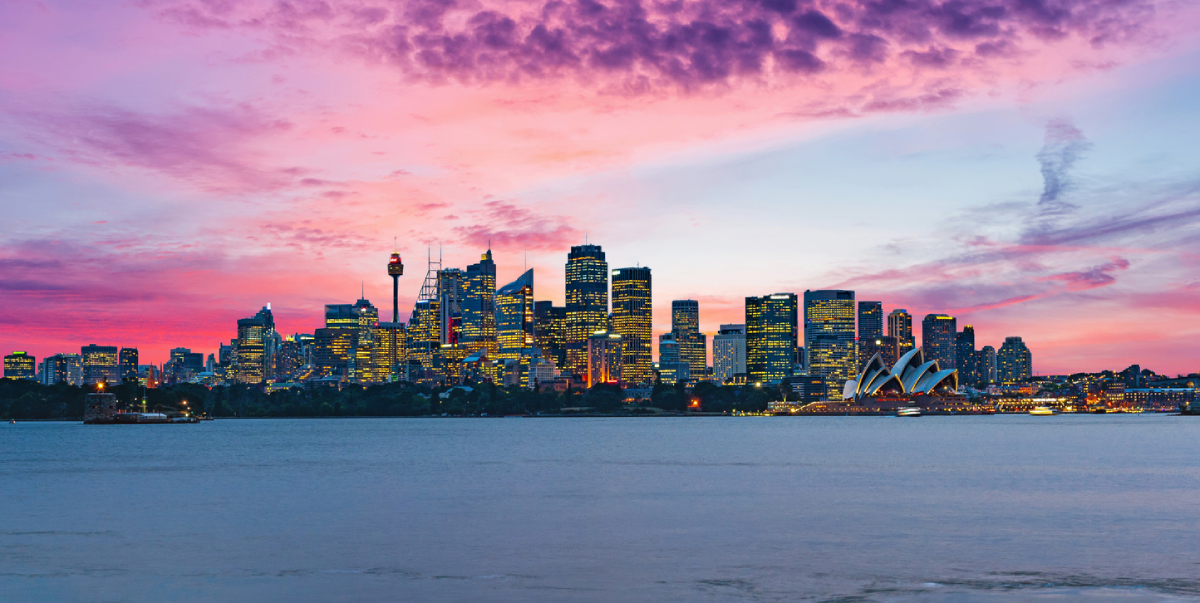Michael Rodrigues, NSW’s 24-Hour Economy Commissioner, engaged Ernst and Young to research the state of play in Sydney’s CBD following the COVID-19 Pandemic.
Ernest and Young’s (EY) Flicking the Switch report illustrates how visits to the CBD have become decoupled from working habits, as more office staff work from home. The report also outlines next steps to make the CBD a more attractive location for consumers and visitors.
EY’s report consulted more than 3,000 Sydneysiders, and contains insights into shifting consumer preferences, increases in cost of living, rents and transport patterns, with key takeaways for the hospitality industry. The report follows hot on the heels of February’s CBD Revitalisation Summit.
Introducing the report, Michael Rodrigues identified the crucial nature of hospitality for the CBD’s post-lockdown recovery, saying: “Images of deserted main streets like George and Pitt have been hard to absorb.”
“That’s why one of my first acts as Commissioner was to ask EY to develop ideas on how the CBD can recover, using entertainment, hospitality, arts and culture as a major driver.”
Rodrigues’s statement is borne out in the statistics the report includes.
Prior to the pandemic, 14.5 per cent of the Sydney workforce headed into the CBD daily, while the area (which occupies only 2.8 square kilometres) was responsible for 9.4 per cent of national GDP growth, adding $140bn in GDP annually.
However, the impact of the pandemic was stark – with a Property Council of Australia report detailing that office occupancy fell to as low as seven per cent in January 2022.
With regards to hospitality, EY’s report details that 66 per cent of those who visit the Sydney CBD once a month or more, are doing so to make use of dining and hospitality amenities.
This figure is supported by sentiment surveys too, with 77 per cent of respondents believing that the CBD has the best dining options for special occasions and the best fine dining options, while 76 per cent believe it has the widest range of dining options.
Yet its not just about the facts and figures. In a follow up episode of the ‘Neon Grid’ podcast, Rodrigues spoke to EY’s Built Environment and Resources Managing Partner, Selina Short, who said: “We need to care from a human-centred perspective.”
“That’s why I think that Flicking the Switch report has been super interesting, because we’ve gone out and talked to or listened to 3,000 different Sydneysiders to get their views around what we need to do to restart this economic engine,” Short continued.
“But how we do that in a really different way, how we take on board what people want and think about that strategically.”
This is the issue that a section of the report titled ‘Initiatives to Inspire’ tackles. The chapter contains possible pathways for the CBD’s future, hospitality featured prominently. When asked what steps could be taken to encourage people to return to the CBD, 83 per cent of survey respondents identified initiatives related to dining and entertainment.
This figure included 36 per cent of respondents saying that more outdoor or open space food and beverage options would encourage them to visit the CBD, while 18 per cent said late night bars and clubs would have the same effect. This number was closely followed by 17 per cent saying that 24-hour bars and clubs would help to entice them back to the region.
One of the most powerful hospitality tool to get people back into the CBD appears to be the NSW government’s ‘Dine & Discover Vouchers’ scheme, with 27 per cent of those surveyed citing these vouchers as a key reason they would return to the city centre.
Speaking on ‘Neon Grid’, Short placed the recovery of Sydney’s CBD in a global perspective, with a particular comparison to New York City.
“Close your eyes and think of a quintessential global city – four out of five people would probably say, ‘New York’ if you did a straw poll.”
And the example of New York illustrates the extent to which visits to city centres around the world have lost the connection to work.
“Everything’s back except offices. NBA games, public transport, restaurants, but offices are around 40 per cent [capacity], whereas everything else is back at 90 per cent.”
“For me, it really does symbolise that view that we’ve dislocated that ‘I come to the CBD Monday to Friday, 9-to-5,’” Short explained.
“That nexus has been fundamentally broken and that is a big shift from how our cities have operated.”
Flicking the Switch concluded with a series of recommendations for policy actions to help revitalise Sydney’s CBD. Paramount amongst these was the extension of the ‘Dine & Discover’ campaign, but several recommendations were given under the remit of licensing and regulation.
These included: exploring opportunities for more light-night licences, recasting ‘offensive noise’ definitions to allow for ‘cultural and hospitality amenities’ and making it easier for small bars in the city to extend their trading hours.
Rodrigues also stressed that the report is entirely independent, and any policy recommendations are not necessarily going to become policy positions of the NSW government. Nevertheless, the report shows a potential route forward in the post-lockdown era, and one that places hospitality front and centre.
As Rodrigues says: “We need to find new ways of attracting visitors to the CBD for non-work purposes.”
“This report sets out a path to begin to rebuild the heart of our city. It’s time to flick the lights back on.”
The full report can be accessed here.

